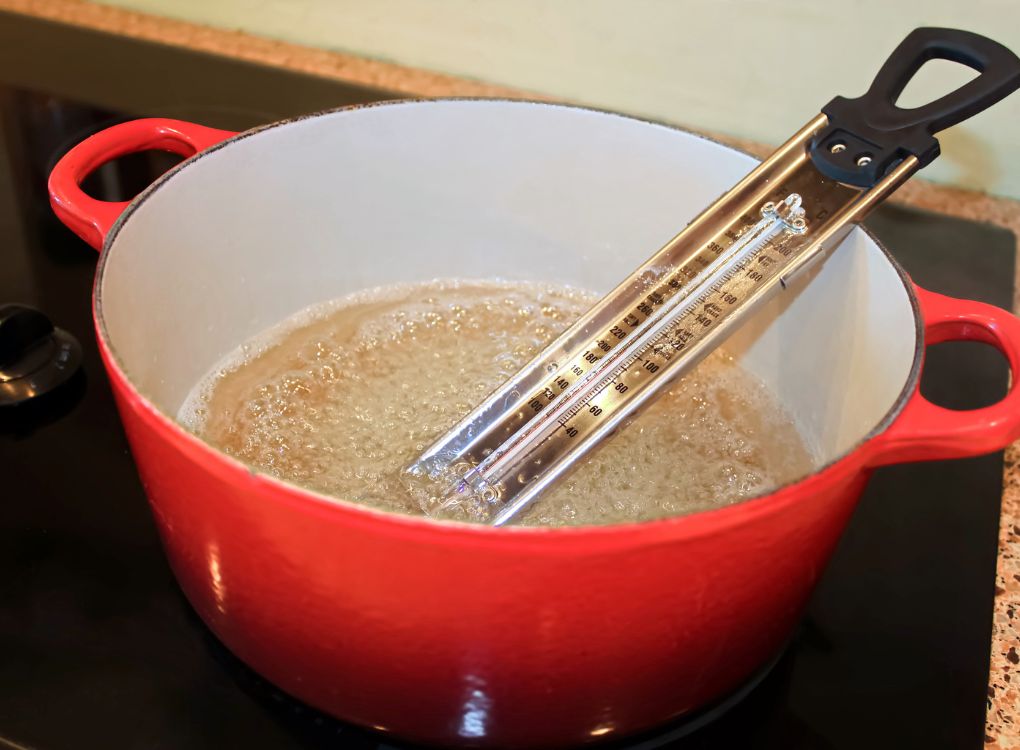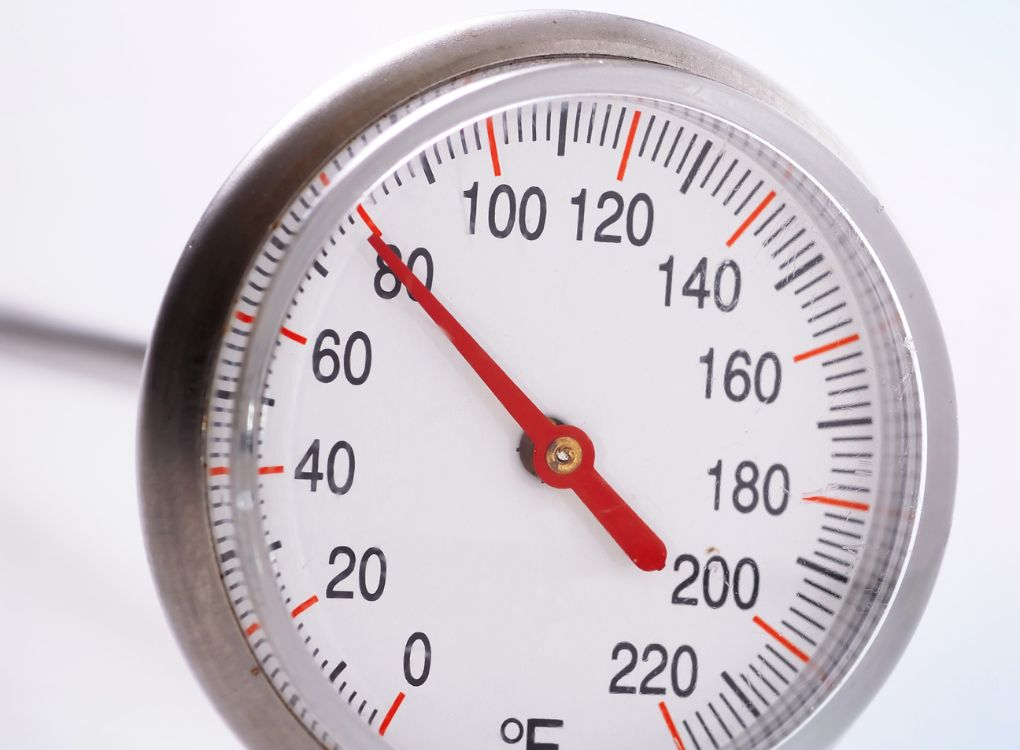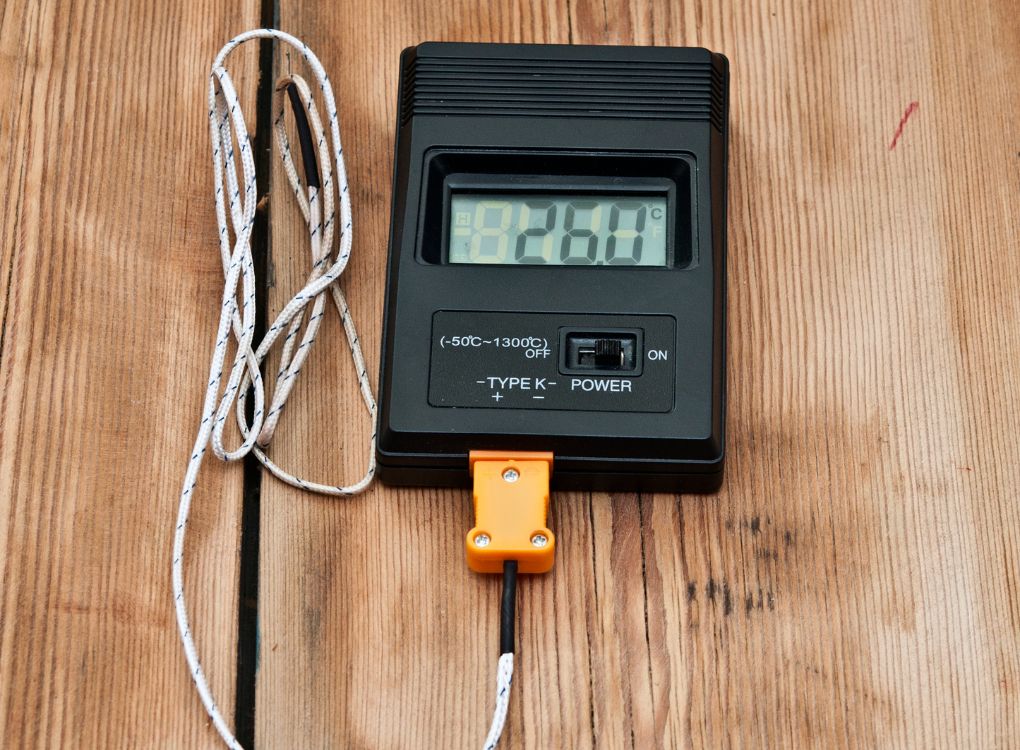Food thermometers vary: candy thermometers measure high temperatures for sugar and deep frying, meat thermometers check internal meat temps and can be oven-safe, and instant-read thermometers provide quick, last-minute readings but aren’t oven-proof. Each type has a specific use for accurate cooking results.
For safety, the best practice is to use a thermometer to ensure that your food has reached the proper temperature. After all, you don’t want to make anyone sick with undercooked food or overcook that expensive piece of meat.
Also when making peanut brittle or any other candy or confection, the mixture needs to be cooked to the right temperature to achieve the results you are looking for. Peanut brittle not cooked to the correct temperature will not be set up correctly.
That divinity will not have that wonderful soft texture. So the question is “Are all food thermometers the same”?
Are All Food Thermometers the Same?
The simple answer to the question “Are all food thermometers the same?” is no. There are three main types of food thermometers.
A candy/deep-fry thermometer, a meat thermometer that can be left in the oven during cooking, and an instant-read thermometer that quickly reads food temperatures and cannot be left in the oven.


Candy Thermometer
A candy thermometer is used to measure what stage a sugar solution has reached. Depending on what type of candy or confection you are making, each needs to be cooked to a certain stage.
If not, you will not achieve the right results. This thermometer can reach up to 400 degrees and because of this can also be used for deep frying as well.
It is usually rounded or flat at the bottom. Do you like making candy?
If so you might like this! It is important to frequently check your thermometer for accuracy.
How do you do this? By immersing the tip of the thermometer in a pan of boiling water.
The boiling point at sea level is 212 degrees. Make sure that the water is at a full rolling boil.
What does that mean? The bubbles will be constant and vigorous.
Once the water comes to a rolling boil, insert the thermometer, leaving it in the water for five minutes to give it time for an accurate reading. Make sure the thermometer is not touching the sides or bottom of the pot.
If it reads 212 degrees you are good to go. If not you need to make adjustments.
What do I mean by this? Well, let’s say the thermometer says 215 degrees instead of 212 degrees.
Then you know that your thermometer is reading three degrees higher. If your recipe calls for 225 degrees you will need to add three degrees.
If you are consistently getting different readings when checking your thermometer then it is most likely time to get a new one. To clean your thermometer, just clip it onto a pot of boiling water to boil off any candy residue then wash it with hot soapy water, rinse, and air dry.


Meat Thermometer
A meat thermometer is used to measure the internal temperature of meat. It has a probe that is usually made of stainless steel.
Needs to be inserted into the thickest part of the meat but make sure it is not resting on a bone. Most of these can be left in the oven during baking or cooking, just be sure they are labeled “oven-safe”.
Most meat thermometers only measure up to 212 degrees. It is rare for meat to go above this temperature during normal cooking.
There are three important temperatures to remember when cooking meat. Any mixture using ground beef or pork should reach at least 160 degrees.
Poultry needs to reach at least 165 degrees and fresh meat steaks, chops, and roasts need to reach at least 145 degrees.

Instant-Read Thermometer
This thermometer is used to test the internal temperature of meat and other foods quickly and usually near the end of the baking or cooking time. It reads the temperature typically in 10 to 20 seconds.
This type of thermometer cannot be left in the oven. I was attempting to make a flourless chocolate cake one day.
The recipe stated to bake for 20 minutes or until the internal temperature was 200 degrees. Well, I didn’t have an instant-read thermometer at that time so just baked it for the 20 minutes stated in the recipe.
Needless to say, the darn thing was overbaked, and into the trash, it went. I now have an instant-read thermometer!
You also need to check the accuracy of your meat thermometers and calibrate them as necessary. To check the accuracy fill a tall glass with ice and add ice cubes.
Insert the thermometer into the glass and hold for 30 seconds without touching the bottom or sides of the glass. If it reads 32 degrees it is reading correctly.
If not it may need to be calibrated. Watch the video below.
Finger Thermometer?
What! A finger thermometer?
Have you watched those cooking shows where the chef just uses his fingers to test the doneness of meat, specifically steaks? My dad could do this and I always called it the magic fingers.
I always wondered “How do they do that”? Well during my research I found the answer!
I haven’t mastered this technique yet but I am working on it! By using an instant-read thermometer when checking the temperature of your steaks, you are releasing all the juicy goodness besides the fact of poking holes into that steak.
My Final Thoughts
- Food thermometers vary in type, including candy/deep-fry, meat (oven-safe), and instant-read thermometers.
- Candy thermometers are ideal for confectionery and deep frying, reaching up to 400 degrees Fahrenheit.
- Meat thermometers are designed for checking meat’s internal temperature and can often remain in the oven while cooking.
- Instant-read thermometers provide quick temperature readings and are not meant to stay in the oven.
- Calibration and accuracy checks are essential for reliable cooking results across different thermometer types.
To ensure safety a food thermometer is a necessary tool in the kitchen. And there are different food thermometers for certain tasks.
So the answer to “Are all food thermometers the same?” is no! A candy thermometer is used when making candy or for deep frying and usually reaches up to 400 degrees.
They are usually rounded or flat at the bottom and not suitable for poking into meat. Whereas a meat thermometer is used for testing the doneness of meat and most of them are suitable to be left in the oven during cooking as long as they are labeled “oven-safe”.
An instant-read thermometer is used to quickly check the temperature, typically in 10 to 20 seconds and usually at the end of your cooking time. And then you have the “magic fingers” technique”!
I hope you found this article helpful. Please leave me a comment below with your thoughts.
I love hearing from you. And as always, have a wonderful day!
FAQ: Are All Food Thermometers the Same?
1. What are the different types of food thermometers available?
- There are several types of food thermometers, including candy/deep-fry thermometers, which are ideal for high temperatures needed in candy making and deep frying. Meat thermometers can be left in the food while it cooks in the oven, ensuring continuous temperature monitoring.
- Instant-read thermometers provide a quick temperature read but cannot remain in the oven during cooking, making them perfect for last-minute checks before serving.
2. How do I choose the right food thermometer for my cooking needs?
- For tasks that require monitoring sugar or oil temperatures, such as making candy or deep-frying, a candy/deep-fry thermometer is recommended because of its high-temperature capabilities.
- If you frequently roast or bake meats, a meat thermometer that can stay in the oven throughout the cooking process is ideal to ensure that your meat reaches and holds the safe cooking temperature.
3. Are digital thermometers more accurate than analog ones?
- Digital thermometers often provide faster and more precise temperature readings compared to analog thermometers, which may take longer to stabilize to a reading.
- They also usually feature easy-to-read digital displays, which can be more user-friendly, especially in fast-paced cooking environments.
4. Can I use an instant-read thermometer for oven cooking?
- Instant-read thermometers are not designed to be left in the oven during cooking as they do not withstand high heat over prolonged periods. They are best used to check the temperature of food near the end of the cooking time.
- For continuous monitoring inside the oven, use an oven-safe meat thermometer that can withstand the oven’s temperature for the duration of the cooking.

I’m Diane, a culinary enthusiast who loves to share my cooking adventures and knowledge with you.
This blog is my cozy corner on the internet where I unravel the secrets behind making everyday cooking simple, enjoyable, and downright delicious.
Whether it’s unlocking the flavor potential in chicken or figuring out why your mashed potato cakes won’t hold together, I’m here to guide you through.
Join me as we explore various dishes, solve common kitchen dilemmas, and discover new recipes that will make you fall in love with cooking all over again.
Cooking is an adventure that’s best shared, so let’s get started!

